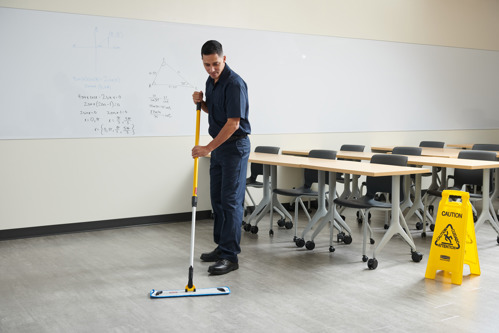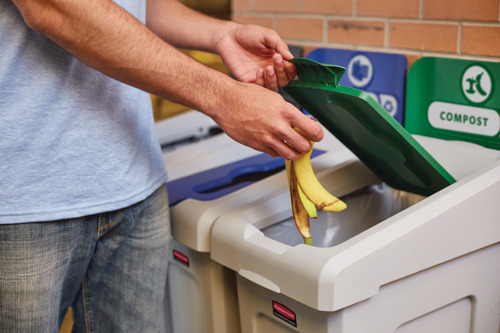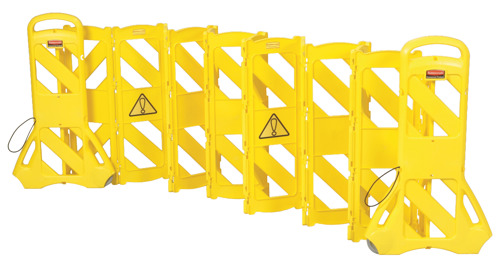Cleanliness and hygiene are essential in all crowded environments, and this is no different for schools, from the early years through universities and colleges. Property and building managers, as well as cleaning companies, are responsible for maintaining a healthy environment in order to improve behaviour management and ensure the school is a pleasant and safe place to be.
Everyone knows how messy kids can be, which is why it’s so important to know how to keep the school environment clean. To achieve this, cleaning companies and property managers or administrators must consider these important factors.

Maintaining a clean school environment is crucial for the health and well-being of students and staff. Effective cleaning in schools involves a comprehensive approach to hygiene that ensures all areas are properly sanitised. By following best practices and using high-quality cleaning products, schools can create a safer and more conducive learning environment.
Here are some actionable school cleaning tips to help you get started:
The main benefits of keeping a clean school environment are:
For more details on maintaining a clean school environment, check out our comprehensive guide: Cleaning in Schools: How to truly keep students safe.
By integrating these practices and maintaining a focus on cleanliness, schools can ensure a safe and healthy environment for all. Whether it’s daily cleaning, using professional cleaning services or setting up effective waste disposal systems, every action contributes to a cleaner and more hygienic school.

From the classroom to the corridors to the school canteen, a thorough cleaning checklist can improve hygiene around the school and keep the environment clean.
This checklist should be followed throughout the day to reduce the workload at the end of the school day. This also ensures no hygiene hazards go unnoticed or get out of hand. The thorough checklist will involve all communal areas and will highlight a range of expert cleaning supplies suitable for all cleaning demands.
Using high-quality school cleaning equipment will make the cleaning process more efficient and successful. These items should include disposable microfibre cloths, mops and mop pads, buckets and utility carts to carry all essential cleaning and disinfectant supplies.
This gives cleaners and property managers the ability to clean all surfaces with ease and confidence. For example, rather than use cheap, low-quality products that simply transport germs, a disposable cloth prevents the spread of infectious bacteria. It sanitises the environment from top to bottom, as the microfibre material removes 99.9% of microbes when used with a disinfectant or a sanitising solution.

In preparation for students returning to school, property managers should install designated sanitary stations throughout the building to prevent germs and bacteria from being transmitted.
Touch-free sanitisation stations provide the best solution. They do not require students to interact physically with the station. Instead, automatic sensors dispense hand sanitiser to keep hygiene practices efficient.
This approach provides a convenient and logical solution for keeping students healthy as it does not crowd washroom facilities or other areas of the school. Crowded areas reduce social distancing opportunities and raise the risk of infections being passed between students. Cleaners and managers can also set up safety barriers to help maintain social distancing in these high-traffic areas.

Providing easily accessible waste disposal units is one of the simplest and most effective ways to keep the school environment clean. Placing refuse bins throughout the school makes it easier for students to dispose of food waste and used bottles or cans, among other packaging.
Considering how large schools are, it is best to choose large capacity refuse bins. Wide-top bins are another solution, as this prevents litter prevalence and reduces the risk of the bins overflowing, which could make the school unsightly. Food waste bins should be emptied regularly to prevent rotting food or cross-contamination, and therefore improve sanitary conditions within the school.

Implementing safety barriers is essential for keeping schools clean and hygienic, especially in busy areas. These barriers help control student flow and ensure social distancing, reducing the spread of infections. Areas like gyms, cafeterias, classrooms, corridors, and auditoriums benefit greatly from having barriers in place to manage crowd movement.
Portable barriers work well in dynamic spaces like gyms, while fixed barriers are ideal for high-traffic areas such as main corridors, classrooms, and cafeteria lines. These barriers not only help maintain hygiene by reducing contamination risks but also keep movement organised and minimise chaos during busy times.
Regular inspection and cleaning of these barriers are crucial. Cleaning staff should frequently disinfect them, especially in areas where they are often touched. Using high-quality materials ensures that the barriers can withstand daily use. By integrating safety barriers into the school's cleaning routine, schools can create a safer, more hygienic environment that supports the health and well-being of students and staff.

Keeping schools clean and hygienic is essential for the health of students and staff. By following a thorough cleaning checklist, using efficient cleaning products, installing sanitary stations, providing accessible waste disposal units and setting up safety barriers, schools can effectively reduce germs and create a safer environment. These steps not only improve physical health but also support better academic performance, mental well-being and the school's reputation.
A proactive approach to cleanliness ensures schools are safe and healthy places to learn. Regular school cleaning, using professional cleaning services and high-quality cleaning supplies all contribute to a cleaner school environment.
For more tips on infection control and maintaining a clean school, contact one of our experienced team members or browse the Rubbermaid Commercial Cleaning product lines here.
